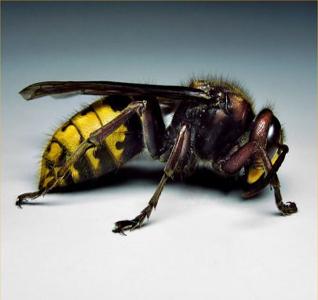Books
Bharind
The Hornet
A Book Review by DALBARA SINGH KALSI
The first interesting thing about this book is that it is
written by Rupinderpal ("Roop") Singh Dhillon, an
Englishman. He was born in England, lives in England, but speaks
Punjabi as a second language. He taught himself the painti (Punjabi/Gurmukhi alphabet) in his mid
thirties.
The second interesting fact is that he has mixed poetry and short
stories in one volume. This is unusual and new to Punjabi, as much as
are many of his subjects and styles.
You can see that Roop is not from Punjab. His idiom, usage of language and, even at times, mixed-up syntax, indicate a diaspora mind at work. The language reflects the Barli Boli version of Doabi Punjabi, skewed by English grammar, albeit subconsciously. This is a pidgin form of the language now common in the United Kingdom amongst the small minority of Punjabi’s born and raised there, who can still speak Punjabi to some extent with their parents.
So this is something we will
have to forgive and tolerate, if we are to enjoy the book. Once this hurdle is crossed, the reader will
find many techniques employed, which are from modern English Literature, currently
alien to Punjabi.
His thought process in Bharind is beautiful, each poem showing a
passion for Punjabi and each story playing in the mind more like a film.
Imagery is Bharind’s strongest point, followed by a mature
understanding of Punjab’s social issues disguised in fantastic and
science-fiction style stories, which mix realism with surrealism.
There are 15 short stories, ranging from some only half a page long, to lengthy pieces, such as the title story, Bharind, and over a score of poems of
varying styles.
The opening sentence of the first story, Lal Lahir, is hard hitting, and shows immediately that this is a book which won’t go down well with some parts of the Punjabi population, as it constantly laments the loss of the rich aspect of our culture but openly displays the issues we pretend don’t exist, such as incest and child rape in the case of Lal Lahir. The first sentence (Hath laaya jitha lonaa nahi chahidaa) establishes empathy for women’s plight in India, and the dual hypocrisy in its culture.
This theme runs through many of the stories, especially in references to female infanticide.
The second, Daaj Denh Da Nateja, carries on the feminist theme by sticking wholly in the real world, this time without any fantastical twist. Again, one feels great empathy for the female telling the story, as her situation is so true for so many in India.
However, the third story takes a very different direction. Kaldaar is a very clever twist to western science fiction, not only by giving it a Punjabi flavour and, as a continuing theme, relating it to social ills currently in Punjab, but uses the concept of robots to reflect attitudes between castes, where the Robot can be interpretated to symbolize Dalits, politically suppressed or otherwise, rising up and aggressively going against the system.
The story is told from their perspective, including
the human, which seems to be representative of the so-called upper castes in India, the landlords, and Big Business. This is a very humane and
intellectual tale disguised as sci-fi, and is open to a variety of interpretations. There are twists in the plot as well, and a rich
and imaginative description. Realism it is not, but definitely one of the
strongest stories in the collection, and possibly Punjabi’s first pure
Science-Fiction work.
The scientific and fantasy theme is carried on in Vikas, which is
reminicent of Planet of the Apes, Star Wars and Alien, as well
as Kafka’s Trial. It is a clever dissection of Punjabi culture and, again,
social ills that are prevail in Indian society. It is also one of the
most disturbing stories I have ever read. If it has a weakness, it is
that too much is going on for the mind to cope with.
[The book, Bharind, is available from info@lahorepublishers.com and lahorebookshop40@rediffmail.com]
Courtesy: APNA. Edited for sikhchic.com
August 2, 2011
Conversation about this article
1: Harinder (Uttar Pradesh, India), August 02, 2011, 9:44 AM.
May you follow the footsteps of Arthur C. Clarke ...
2: Parveen Kaur (Canada), August 04, 2011, 6:28 PM.
Sounds interesting ... will order a copy. Well done.
3: Kuldip (Crawley, United Kingdom), August 07, 2011, 3:56 PM.
2-3 din ho gaye net te aaya ni/ hanji mainu copy mil gayi/ bahut wadhiya laggeya book receive karke ... te cover dekh ke... :) - I'll spread the word.




